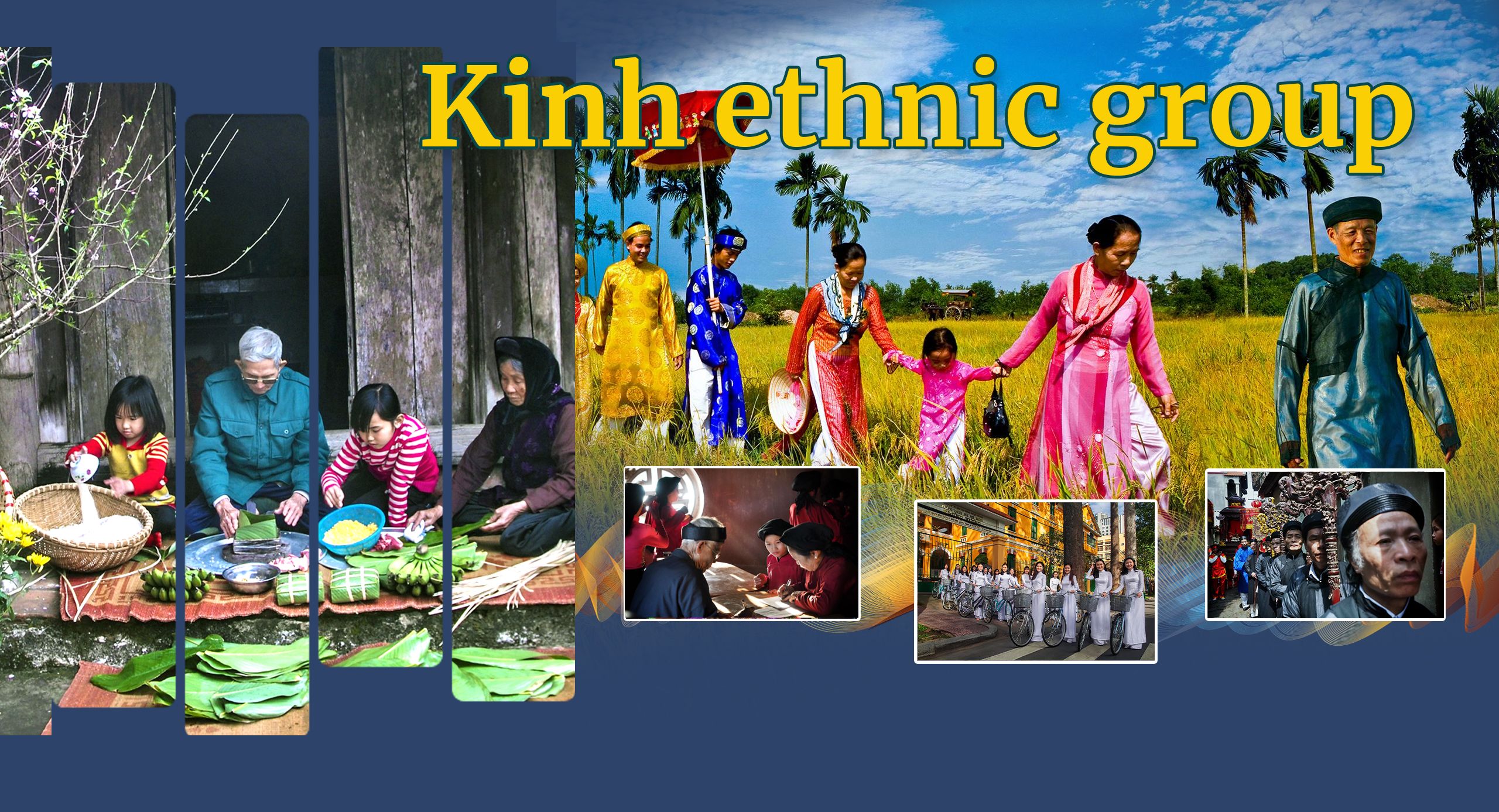
Alternate name: Vietnamese
Language: Vietnamese, a strand of Viet-Muong (northern Vietic language), within the Austroasiatic languages
Residence: The Kinh are the only ethnic group among the 54 groups of Vietnam who reside in communities in all provinces, across all terrain and areas throughout the country (including delta, midlands, mountainous areas, highlands, coastal areas and islands). They gather mainly in the delta areas.
History: The Kinh (like the Muong, Tho and Chut ethnic groups) are indigenous people who have lived along the length of Vietnam for a long time, not originating from outside territories. From the original cradle in the North and North Central regions, concentrated in the delta, the Kinh people migrated to other regions, becoming a large ethnic group which is present in all areas and terrains of the country.
Kinh ethnic group has the largest population among the 54 ethnics in Vietnam, concentrated in the plains with favourable conditions for socio-economic development. Therefore, they are the main force participating in national construction.
History
The Kinh (like the Muong, Tho and Chut ethnic groups) are indigenous people who have lived along the length of Vietnam for a long time, not originating from outside territories. From the original cradle in the North and North Central regions, concentrated in the delta, Kinh people migrated to other regions, becoming a large ethnic group present in all areas and terrains of the country.
Throughout the development process of Vietnam's history, the Kinh people have always played a central role in attracting and unifying all ethnic groups in the cause of national construction and defence.
The Kinh people are also known as the Vietnamese.
Population and language
- Population: According to the statistics by the Vietnam Population and Housing Census 2019, the Kinh ethnic group has 82,085,826 people (including 40,804,641 men and 41,281,185 women), accounting for 86.83% of the total population of the country. The population living in urban areas has reached 31,168,839, while the remaining 50,916,987 live in rural areas.
In the 10 years from 2009 to 2019, the population of Kinh increased by nearly 8.5 million people. Their average annual population growth rate was 1.09% during 2009-2019 period, lower than the average growth of ethnic minority groups (1.42%) and of the country’s population as a whole (1.14%).
Kinh people are present in all provinces and cities across the country. There are 5,495,484 Vietnamese people residing in the northern midlands and mountains, accounting for 6.7%; 22,074,819 people in the Red River Delta (26.9%); 18,111,079 people in the North Central and Central Coast regions (22.1%); 3,642,726 in the Central Highlands (4.4%); 16,798,500 in the Southeast (20.4%); and 15,963,218 in the Mekong River Delta (19,5%).
- Language: Vietnamese, which is a Viet-Muong language within the Austroasiatic languages.
Chu quoc ngu (the Vietnamese alphabet) was built on the basis of combining Latin letters (directly from the Portuguese alphabet) and adding nine diacritics (including four to create new phonemes and five to indicate tones).
Vietnamese language and alphabet was combined into the Democratic Republic of Vietnam.
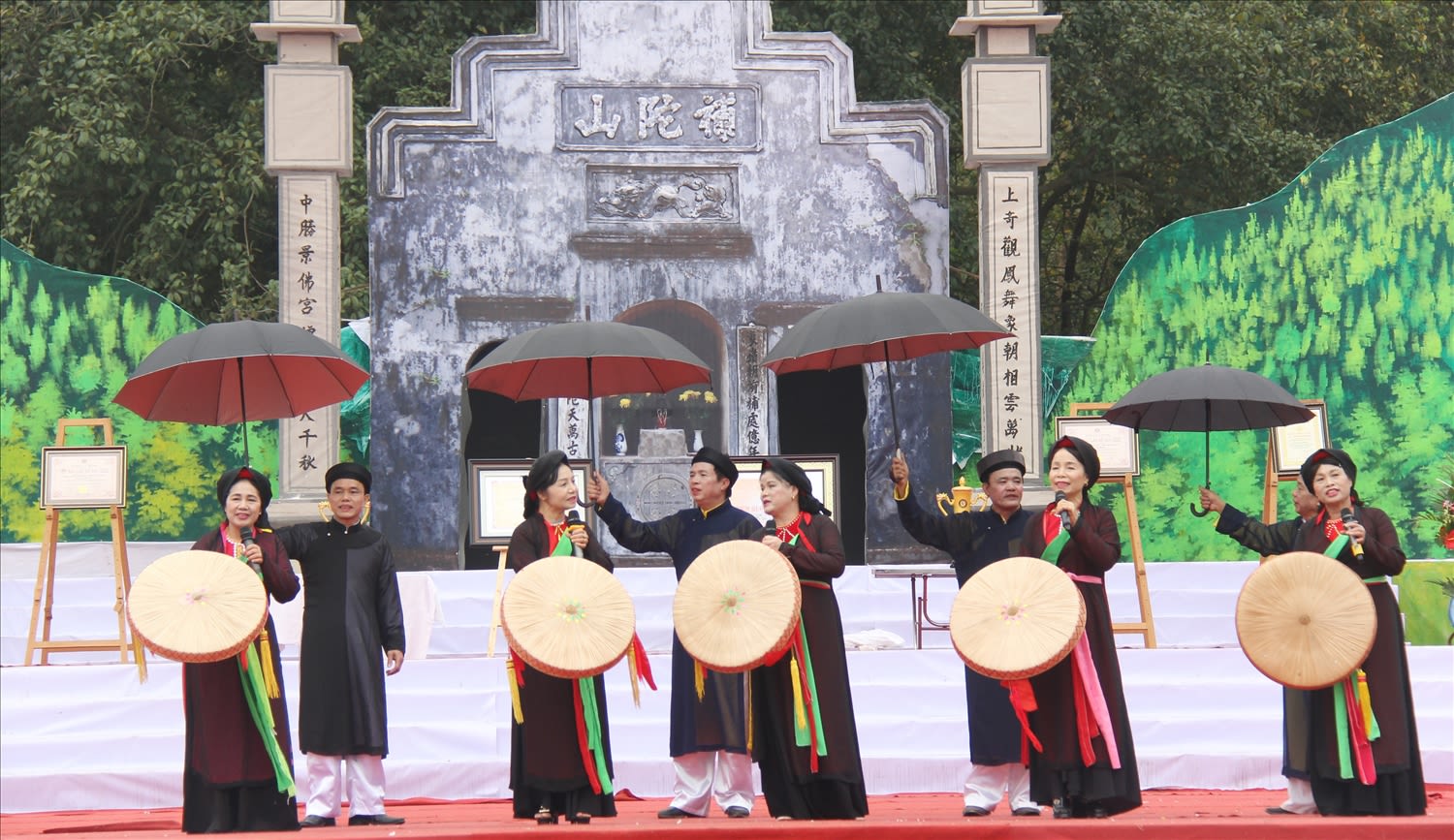
Geographic distribution
The Kinh people are the only ethnic group among the 54 groups of Vietnam who reside in communities across all provinces, terrains and areas throughout the country (including delta, midlands, mountainous areas, highlands, coastal areas and islands). They gather mainly in the delta areas.
Vietnamese people also concentrate along major roads and are the main population in all urban areas of the country.
With the above characteristics of population and residence, the Vietnamese have played a key role in the country’s development since the beginning of the national construction cause, through the ancient, middle, early modern and modern periods.
Main features:
- Traditional social institutions: The majority of Vietnamese people live in villages, and a few villages gather to form a commune. In a village, there are usually many hamlets, including large ones that can be equivalent to a village. Village rules are regulated in a relatively comprehensive and strict manner in terms of village activities, encouraging people to acknowledge and voluntarily follow them.
Most Vietnamese families follow the patriarchy regime, but women still play an important role as the economic manager in the family.

- Religion and belief: Ancestor worship is the most important belief of the Vietnamese people. The custom of worshiping the Lord of the Soil and Ground, Kitchen Gods and the Earth God is popular in many localities, while many families worship tutelary gods and Buddha. A number of residents in rural or urban areas follow Christianity, Protestantism and other religions such as Caodaism and Hoa Hao Buddhism.
- Housing: Vietnamese people usually live in the houses with no upstairs. The main house has a structure with 3 to 5 rooms, with the middle being the solemn place to put the altar for worshiping their ancestors. The side rooms are used for the family’s members to rest and carry out daily activities. A room is arranged in the wing as a living room for women and a storehouse for the family’s food and wealth. The kitchen is usually attached to the barn. In many southern provinces, the kitchen is usually built adjacent to the main house. The yard is used for drying clothes and playing together, creating a cool and airy space suitable for humid tropical climate conditions.
Today, many villages have become crowded due to rapid population growth. As such, the traditional house campus of most families with a large yard and garden has had to be divided into many smaller grounds.
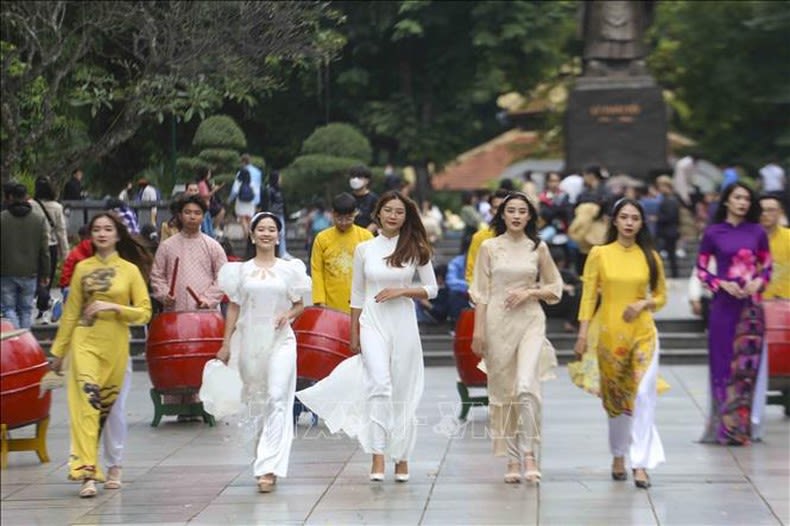
- Festivals: Lunar New Year Festival is the largest of this kind in the year. The spring festivals are held following the Lunar New Year Festival. There are also many other traditional festivals such as the Full Moon of the First Lunar Year, the Qingming Festival, Doan Ngo Festival (the traditional Double-Fifth Festival), the full moon of the seventh lunar month, and the new rice festival. Each festival has its own specific meaning and rituals.
- Costumes: In the past, men used to wear quan chan que (a kind of wide-leg pants), brown blouses (in the North) and black blouses (in the South) and walked barefoot. During festivals, they wore white pants, ao chung luong den (a kind of long shirt for men), khan xep (ready-to-wear turban) and wooden sandals. Women in the North wore black skirts, ao yem (chemise - a traditional undershirt), brown blouses and khan mo qua. Meanwhile, women in the South are associated with ‘ao ba ba’ (southern women's traditional costume), khan ran (a traditional black and white checkered shawl) and non la (conical hat). During festivals, women often wore Ao Dai (traditional Vietnamese long dress).
Today, with the introduction of fashion from the West and other countries as well as different situations and jobs, the traditional clothes of Vietnamese people have been replaced by T-shirts, white shirts, long skirts and trousers to suit the dynamic activities of daily life. Ao Dai have also been renovated to suit the needs of modern fashion but still retain their traditional features, enhancing the figure, beauty and tenderness of Vietnamese women.
- Marriage: Vietnamese people attach great importance to pure and faithful love. In feudal times, parents arranged marriages for their children. However, today, men and women love and marry each other voluntarily. The traditional wedding ceremony in Vietnam has four basic steps including dam ngo (the proposal), an hoi (engagement), cuoi (wedding) and lai mat (post-wedding visit).
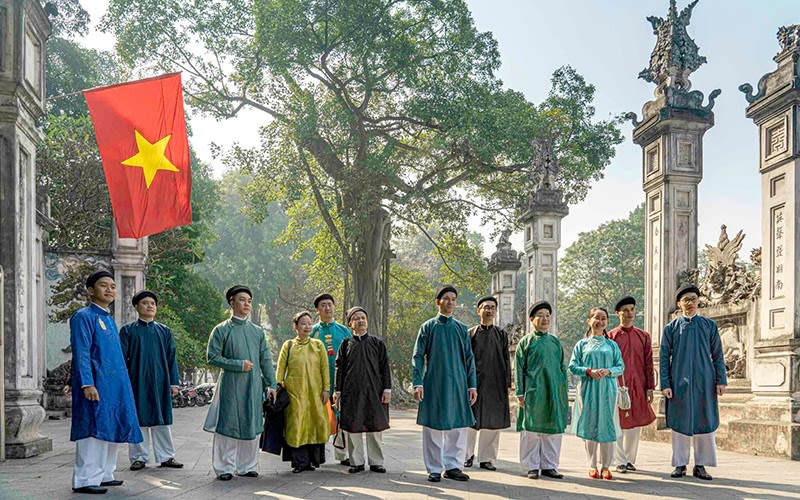
- Cuisine: “Rice and tea” are the basic daily food and drink of the Vietnamese people. Glutinous rice is only found during festivals. Daily meals usually include vegetables, crab and fish soups. Vietnamese people especially like many kinds of sauce (such as shrimp and fish sauce) and pickled vegetables (mustard green, onions, eggplants).
The traditional tray of Kinh people during the Lunar New Year Festival cannot be complete without familiar delicacies such as banh tet (round glutinous rice cake), banh chung (square glutinous rice cake), pickled onions, thit dong (frozen meat), nem ran (spring rolls), gio (sausage), xoi (sticky rice), ga luoc (boiled chicken) and canh mang (bamboo shoot soup). Wine is used during festivals and holidays. Eating betel nut and smoking thuoc lao (Vietnamese tobacco) was not only a habit but is also dedicated to rituals and customs.
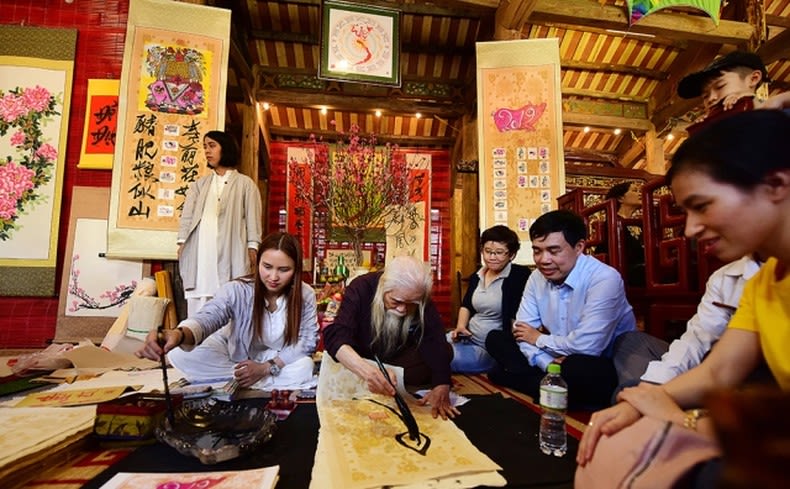
Economic conditions:
The majority of Vietnamese residents live on agriculture, mainly wet rice cultivation in association with animal husbandry. They have also expanded traditional crafts and trading. Wet rice agriculture was formed and developed over a long period of time. The raising of pigs, cattle, poultry and fish have been also developed strongly. Vietnamese are famous for their skills in handicraft, so they have developed hundreds of crafts in which they seem to reach the pinnacle of ingenuity. Many craft villages have separated from agriculture. Village and district markets and fairs are very busy. During the current process of industrialisation and modernisation of the country, the urban areas and industrial parks have been increasingly developed, so the people’s lives have also been improved.
Source: Committee for Ethnic Minority Affairs, ‘Vietnam’s ethnic groups’ book.